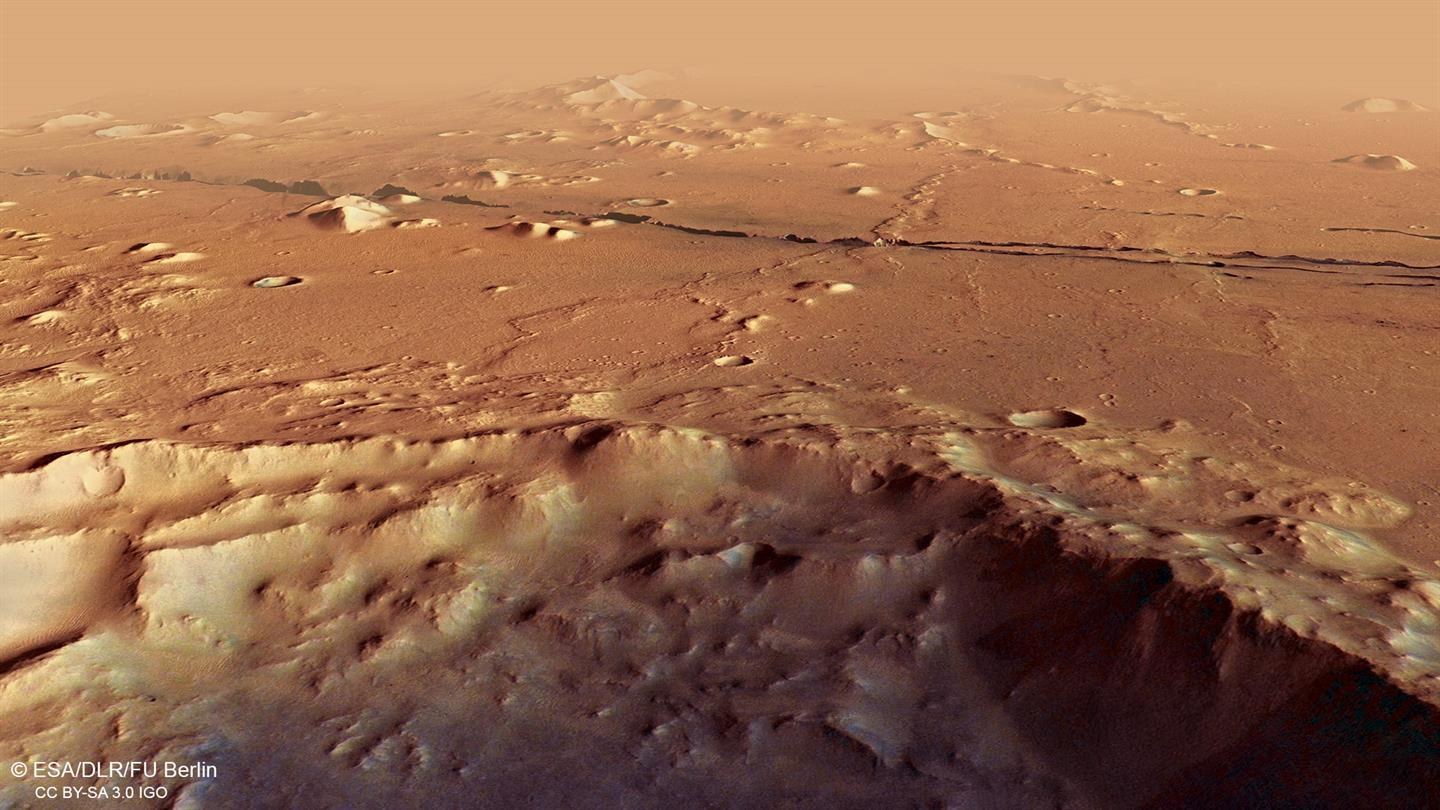Perspective view, looking from north to south, over Cerberus Fossae
Perspective view, looking from north to south, over Cerberus Fossae
If, in a distant future, astronauts drove their Mars vehicles over the Elysium plain on a survey, travelling north eastwards to the Elysium Mons and Alba Patera volcanoes, standing at the edge of the Cerberus Fossae, they would have a similar experience as the Spanish pioneer García López de Cárdenas. In the year 1540 – as the first European to do so – he gazed in astonishment at the view from the edge of the Grand Canyon. Like him, the astronauts would have to choose between retracing their route or making a major detour. The walls of the Cerberus Fossae are extremely steep, almost perpendicular in places, and can be more than 500 metres high locally. They were created as the result of expansion in the Martian crust, in the form of tectonic fractures, through which magma was able to rise to the surface and to flood the plains with a thin layer of lava.

